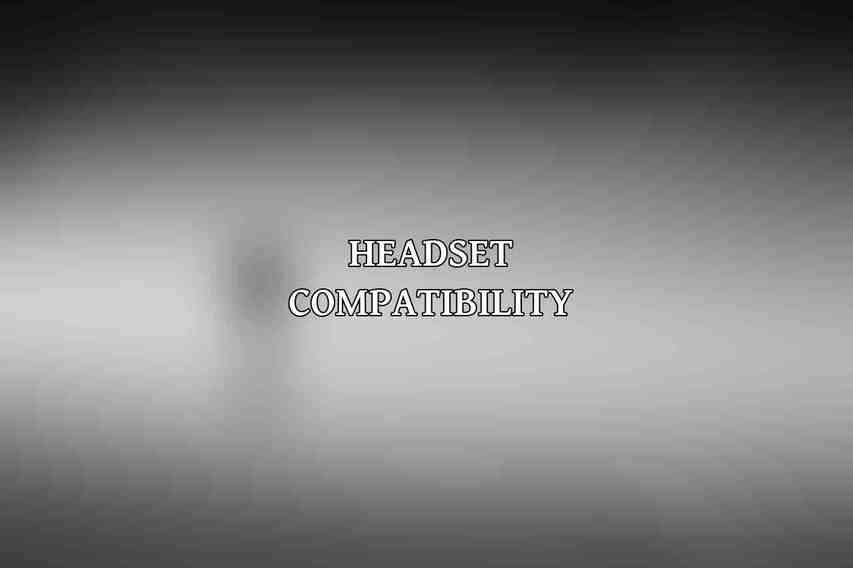Virtual Reality (VR) technology has seen a significant evolution in recent years, offering users immersive and interactive experiences like never before. As the market continues to expand, choosing the right VR headset tailored to your needs becomes increasingly crucial. When considering compatibility, comfort, and immersive experience, there are several key factors to keep in mind to make an informed decision.
It’s essential to understand the diverse array of headsets available on the market. compatibility with your setup, comfort during extended use, and the level of immersion you seek are all vital aspects to consider. By exploring these factors, you can ensure a seamless VR experience tailored to your preferences. Learn more about Top AR and VR Eyewear Trends in 2024 – Insights from Eyeglasses.com
Overview of the VR Headset Market

The VR headset market in 2024 offers a plethora of options catering to various preferences and devices. From PC-based headsets to standalone and console-specific options, users can choose a headset that aligns with their specific needs.
Importance of Considerations
Ensuring compatibility with your existing hardware, prioritizing comfort for extended wear, and seeking an immersive experience that transports you to virtual worlds are crucial considerations when selecting a VR headset. These factors can significantly impact your overall enjoyment and satisfaction with the technology.
Key Factors to Keep in Mind
When delving into the world of VR headsets, key factors such as compatibility, comfort, and immersion should guide your decision-making process. Understanding the distinctions between different types of headsets and their features will help you choose the perfect fit for your VR experiences.
Headset Compatibility

VR headsets can be broadly categorized into PC-based, standalone, console-specific, and smartphone VR headsets, each offering distinct advantages based on the user’s requirements.
PC-Based Headsets:
PC-based headsets offer high-end immersive experiences but require a powerful PC setup to run smoothly. Examples include the Valve Index, the HTC VIVE Pro 2, and the HP Reverb G2.
Standalone Headsets:
Standalone headsets provide portability and ease of use without the need for a connected PC. Popular options include the Meta Quest 2, the HTC VIVE Focus 3, and the Pico 4.
Console-Specific Headsets:
Designed for specific gaming consoles, these headsets offer optimized experiences. Examples include the PlayStation VR2, exclusive to the PlayStation 5, and the rumored Xbox VR headset for Xbox Series X/S.
Smartphone VR Headsets:
Providing an entry point to VR, smartphone headsets like Google Cardboard and Samsung Gear VR offer a budget-friendly way to experience virtual reality using your smartphone.
Headset Comfort and Fit
Influencing how long you can comfortably use the headset without fatigue or discomfort.
Head Strap Design:
Adjustable head straps and padded or breathable materials contribute to a secure and comfortable fit during extended use.
Facial Interface:
Opt for headsets with soft, hypoallergenic facial interfaces that can be customized to different face shapes for enhanced comfort.
Weight and Form Factor:
Consider the weight and overall design of the headset to ensure compatibility with glasses and prevent discomfort during prolonged usage. Read more on Navigating the Future: Virtual Reality Goggles from Eyeglasses.com
Immersive Experience
An immersive VR experience is the cornerstone of any VR headset, with factors such as field of view, refresh rate, resolution, audio quality, and tracking accuracy influencing the level of immersion.
Field of View (FOV):
Wider FOVs provide a more immersive experience by expanding the range of vision within the virtual environment.
Refresh Rate:
Higher refresh rates ensure smoother visuals, reducing motion blur and eye strain for a more comfortable viewing experience.
Resolution:
Higher resolutions result in sharper and clearer images, enhancing the visual quality of VR content. Find more on AR Glasses vs. VR Headsets: Which is Right for You? – Eyeglasses.com Comparison
Audio:
Quality integrated audio or headphone options can significantly enhance the immersive experience by providing realistic soundscapes that complement the visuals.
Tracking Accuracy:
Accurate tracking of head movements is essential for a seamless and responsive VR experience, with inside-out tracking technology eliminating the need for external sensors.
Accessories and Software
Accessories such as motion controllers, third-party software support, and proper maintenance are essential aspects to consider to enhance your VR experience and prolong the lifespan of your headset.
Motion Controllers:
Hand tracking and interaction provided by motion controllers add an extra layer of immersion to VR experiences, enabling more natural and engaging interactions within virtual environments.
Third-Party Software:
Explore the range of software and applications available for your chosen VR headset, either through built-in app stores or third-party platforms, to access a diverse library of content and experiences.
Maintenance and Cleaning:
Regular cleaning and maintenance of your VR headset are crucial to ensure longevity and optimal performance, preserving the quality of your device for continued use. You can find more information on How to Choose the Right AR/VR Eyewear – Expert Tips from Eyeglasses.com
selecting the right VR headset involves considering compatibility, comfort, immersive experience, and additional accessories and software options. By understanding your needs and budget constraints, you can make an informed decision that aligns with your preferences and maximizes your enjoyment of virtual reality technology. Stay updated with the latest advancements in VR technology to make the most of your immersive experiences in 2024 and beyond.
Frequently Asked Questions
1. What factors should I consider when choosing a VR headset?
When choosing a VR headset, consider factors such as display resolution, refresh rate, field of view, comfort, tracking capabilities, and compatibility with your existing hardware. Dive deeper into Ultimate Guide to Augmented Reality Eyeglasses – Eyeglasses.com
2. Are there different types of VR headsets available in the market?
Yes, there are primarily two types of VR headsets: standalone headsets that do not require a PC or console, and tethered headsets that need to be connected to a PC or gaming console.
3. What is the difference between OLED and LCD displays in VR headsets?
OLED displays offer better color reproduction and contrast ratios, while LCD displays typically have faster refresh rates and are more budget-friendly. Choose based on your priorities for visual experience.
4. How important is the tracking system in a VR headset?
The tracking system is crucial for providing accurate movement and interaction in the virtual environment. Look for headsets with reliable inside-out or outside-in tracking systems for a more immersive experience.
5. Can all VR headsets be used for gaming or are there specific gaming headsets?
While many VR headsets support gaming, some are specifically designed for gaming with features like higher refresh rates, better tracking, and optimized compatibility with gaming platforms. Consider your gaming needs when choosing a headset.

